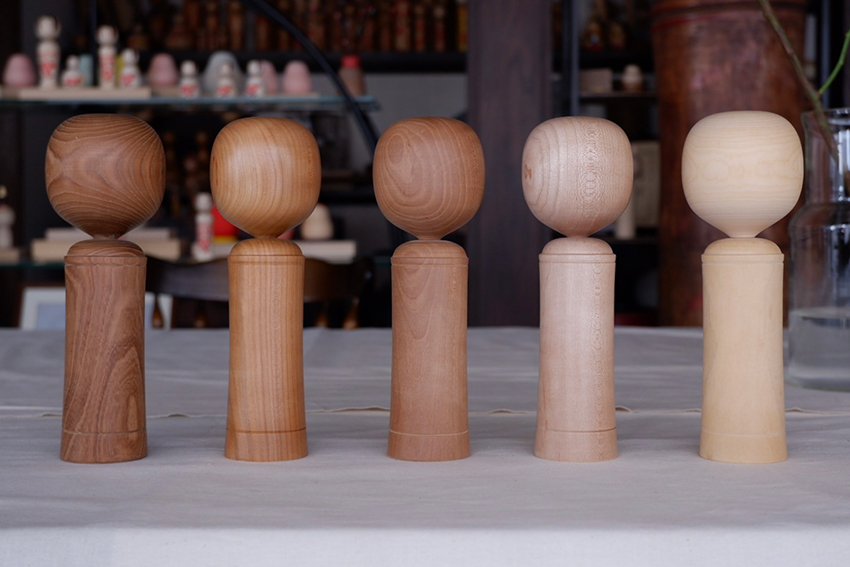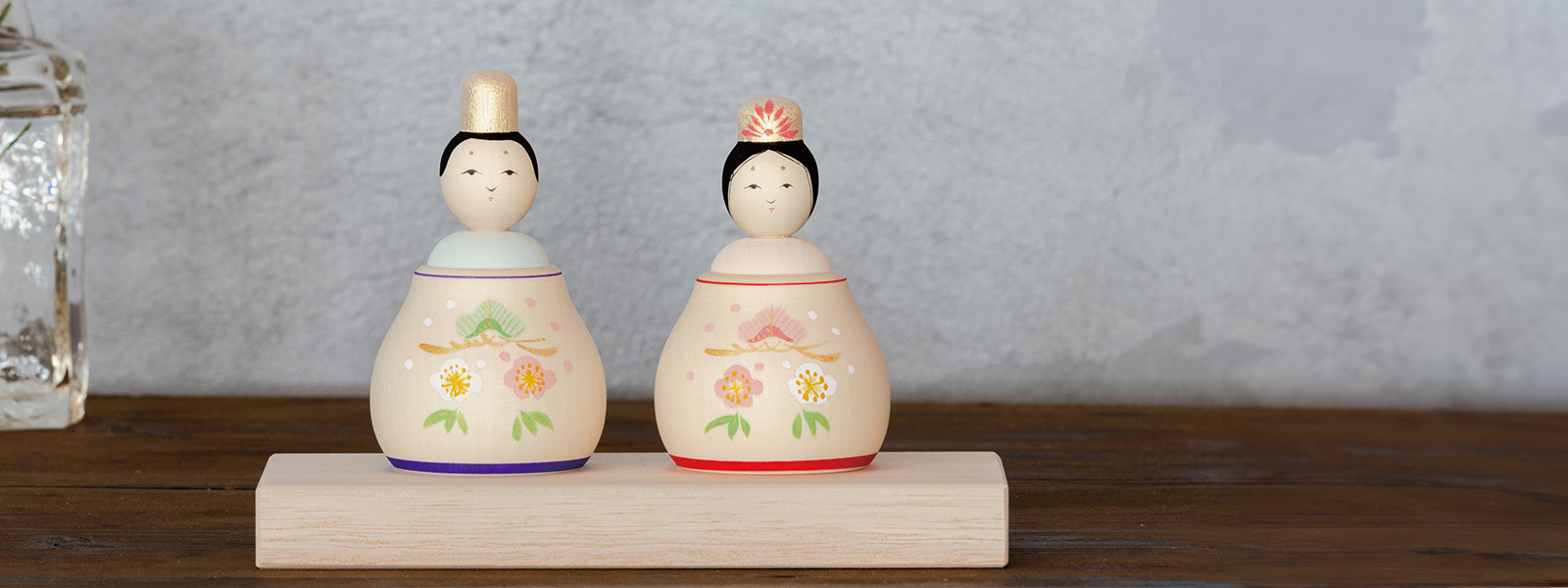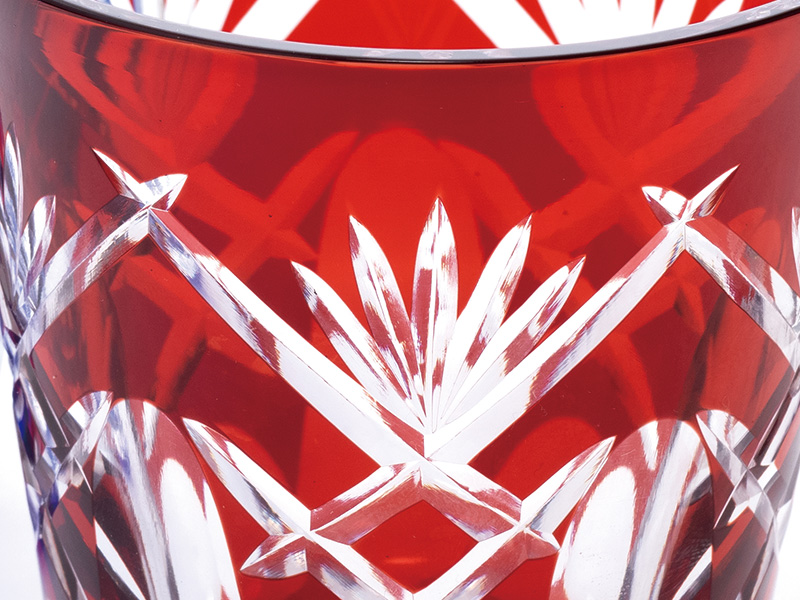Naruko Onsen in Miyagi Prefecture is home to “Sakurai Kokeshi,” a distinguished branch of the Kijishi (*) lineage that has been passed down from generation to generation since the end of the Edo period. The Sakurai family cherishes the concept of “kokeshi dolls that coexist with people’s lives” and strives to create works that resonate with daily life, embodying the unique characteristics of Tohoku Naruko Onsen and the Sakurai family.
“Sakurai Kokeshi” inherits traditional craftsmanship while continuing to innovate, making its works transcend genders and borders, earning love from people everywhere.
*Kijishi: Refers to a craftsman who uses a lathe to make woodwork
In the Naruko craft shop, there are many colorful kokeshi dolls displayed
The Sakurai Kokeshi Studio, which constantly tries and innovates
Evolving from the charming “Gosho Ningyo” of Kyoto, “Naruko Kokeshi” boasts an adorable face that captures the eye.
――Kokeshi dolls have unique characteristics depending on their region of production. What are the characteristics of “Naruko Kokeshi”?
“Naruko Kokeshi” is derived from the Kyoto “Gosho Ningyo” and is characterized by bangs decorated with mizuhiki (water knots) on the head. Additionally, the body of the kokeshi is often painted with chrysanthemum patterns.
Originally, kokeshi dolls were used as mascots to pray for the healthy growth of children and were sometimes given as gifts for important life events, such as graduations and the completion of a new home. The head of the ‘Naruko Kokeshi’ is embedded. This type of kokeshi has a slender middle section, with wider shoulders and base.
Kokeshi dolls that pray for the healthy growth of children
Kokeshi dolls to celebrate graduations, new homes, and other occasions
Each lineage has its own unique form of “Naruko Kokeshi.” These skills are passed down through the master-apprenticeship system, from parents to children or from master to apprentice. Kokeshi craftsmen do not merely imitate the works of their predecessors or masters, nor do they use traditional techniques to create antique works. Instead, they focus on inheriting the philosophy, spirit, and techniques of their predecessors while infusing their own style into their creations.
The innocent smile and simple appearance of the kokeshi evoke a deep sense of warmth, as if the doll is quietly listening to the joys and sorrows in one’s heart, even amidst the harsh, snow-covered landscapes of Tohoku.
Traditional kokeshi dolls made by Mr. Akihiro Sakurai
Kagami mochi made using a lathe and the same mizuki wood used for making kokeshi dolls
――What is the uniqueness and appeal of Sakurai Kokeshi?
Most of the Sakurai family’s kokeshi dolls are adorned with very delicate patterns.
The kokeshi dolls that have been inherited from the previous generation or the master are called “traditional kokeshi,” and these dolls are named after the “type” of the maker. One of the charms of the Sakurai family is the combination of traditional elements. For example, the “Iwazo type,” “Mannojo type,” and “Kenzaburo type” each have their own unique shapes and colors.
“Iwazo type”
“Iwazo type,” “Mannojo type,” and “Kenzaburo type”
As mentioned earlier, the inheritance of kokeshi is not simply a copy of the previous generation’s work. When making traditional kokeshi, the craftsmen of the Sakurai family always follow traditional methods with deep respect for their predecessors and strive to create unique pieces.
Each craftsman brings their own personality to the kokeshi, interpreting the delicate emotions contained within and giving each doll a unique soul. This individualized touch is what makes each kokeshi special.
The kokeshi also reflects the craftsman’s personal attitude towards life and aesthetic sensibility, which is the crucial essence of the kokeshi.
① Autumn: “Logging” The logged wood is left to dry for a while with the leaves still attached
② Winter: “Peeling” The bark is peeled off manually, layer by layer, using tools
③ Spring: “Drying” To prevent the wood from cracking, the drying process is carefully monitored, and then the wood is dried indoors
④ Summer: “Wood Turning” The dried wood is carved into the shape of a kokeshi doll
⑤ Summer: Natural Sandpaper “Inakusa” Home-grown natural sandpaper made from bundled inakusa is used to create a fine polish. It is one of the important tools
⑥ Summer: “Painting” Traditional chrysanthemum patterns are painted with precise brush strokes, one by one
The production of kokeshi begins with the wood drying process
――“Sakurai Kokeshi” is crafted entirely by craftsmen, from sourcing raw materials to carving the dolls. How long does it take to make a kokeshi?
It takes between one to one and a half years from the time the wood is procured to when it is dried to a usable state, meaning it takes at least one and a half years to complete a single kokeshi. For example, the “Mizuki” wood used by Naruko Kokeshi contains water and has a delicate white vein. If left untreated during the drying period, the wood will change color. Therefore, the Sakurai family pays special attention to preserving the water content and color of the wood.
Additionally, diverse types of wood, such as maple and cherry blossom, are used, each with its unique color and texture. Depending on the type and thickness of the wood, the drying time varies. Some woods, like mountain cherry blossoms, even require more than three years of drying time.

From the left: Japanese Pagoda Tree, Mountain Cherry, Pear, Japanese Maple, Dogwood
Characteristics of the wood:
Japanese Pagoda Tree: The darkest, almost black. It is said to be an auspicious wood with the meaning of warding off evil.
Mountain Cherry: The leaves are brown, giving it a calm and luxurious color.
Pear: The most orange, with a yellowish-brown color.
Japanese Maple: A gentle, elegant color with a reddish tint. Lighter in color than Mountain Cherry.
Dogwood: The wood grain is white, and the grain is not very noticeable.
――Drying the wood is one of the crucial steps in making Sakurai Kokeshi. From the selection of raw materials to the final product, each stage showcases unique process technology.
Kokeshi craftsmen need to complete all the manufacturing processes themselves, making the scope of their work very broad. This includes procuring wood, drying, timber pulling, painting, and production. Additionally, all the tools, such as planers and thin blades, are made by the craftsmen themselves. Therefore, besides carving kokeshi, craftsmen also need to forge their tools. The tools used to grind kokeshi are still made traditionally, using equisetum grass and straw.
“Tools must be beautiful and clean” is the Sakurai family’s insistence on tool-making, a tradition passed down through generations. Each process reflects the Sakurai family’s craftsmanship. Furthermore, to ensure the smooth passing on of the kokeshi craft, the Sakurai family has inherited the will of the fourth generation Shoji and engaged in reforestation activities for Mizuki.
Wood turning by the sixth-generation Mr. Naomichi Sakurai
Indispensable tools for making kokeshi dolls
A new kokeshi that is always close to contemporary life
――Modern lifestyles are constantly evolving, and Sakurai Kokeshi continuously innovates to keep pace with these changes. Where does the inspiration for these contemporary designs come from?
For example, I draw inspiration from the works created by the previous generation of kokeshi craftsmen and from the rich, seasonally changing natural landscape of Naruko. Additionally, I visit the traditional kokeshi craftsmen of Tohoku, who are recognized as modern masters, to observe their creative processes. I also attend events held by companies and makers in the field of modern traditional crafts. Furthermore, I conduct market research in urban areas to stay attuned to current trends.
――Can you tell us about the most popular kokeshi at the moment, or your personal favorite?
Sakurai’s wood-based humanoid “Hina Doll” is one of the most popular works. Sakurai Kokeshi is famous for its young human form, and it has even become a representative work of Sakurai Kokeshi. In fact, the Hina Doll is a work developed and created by the fourth generation of the Sakurai family. Personally, I am a major fan of traditional kokeshi, and the traditional kokeshi made by the Sakurai family in the previous generation is my favorite.
Wooden Daruma
The most popular ‘Hina Dolls’
――At the Sakurai Studio in Naruko Onsen, there is also a kokeshi painting experience available. Could you introduce the details of this experience for us?
Participants can learn about the history, characteristics, and production process of Naruko kokeshi, and experience first-hand how to draw kokeshi with a Japanese pen and dye. People can even draw reel lines using a manual reel, which provides a rich and professional drawing experience.
Painting experience available
People can use the same tools as the professionals for the experience
――Using the tools of a professional craftsman to make kokeshi is a bit complicated, but it is a rare experience.
‘Sakurai Kokeshi’ shop
The shop displays various kokeshi dolls
Official website of ‘Sakurai Kokeshi’ shop
Sakurai Kokeshi Official Website: https://sakuraikokeshi.jp/
Address: Yumoto 26, Naruko Onsen, Osaki City, Miyagi Prefecture
Access: A 3-minute walk from JR Rikuu East Line Naruko Onsen Station
Phone/Fax: 0229-87-3575
Business Hours: Weekdays 10:00-17:00, Saturdays, Sundays, and Holidays 9:30-17:00
Closed: Irregular holidays. Please confirm business hours with us before visiting












